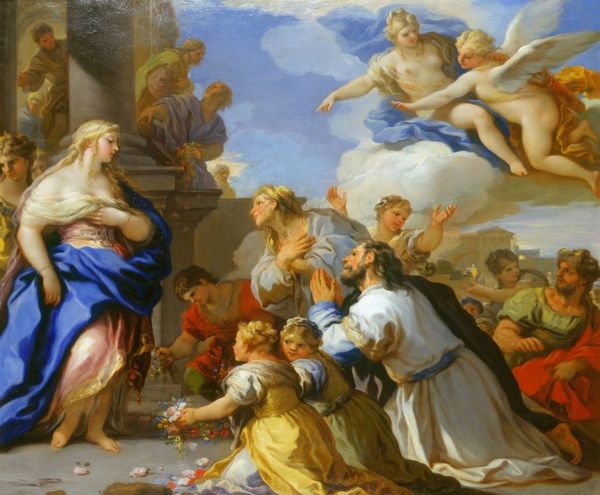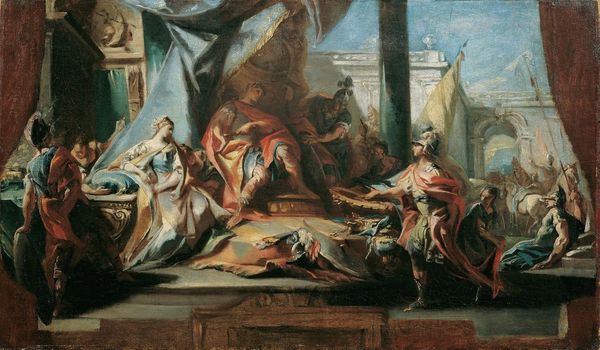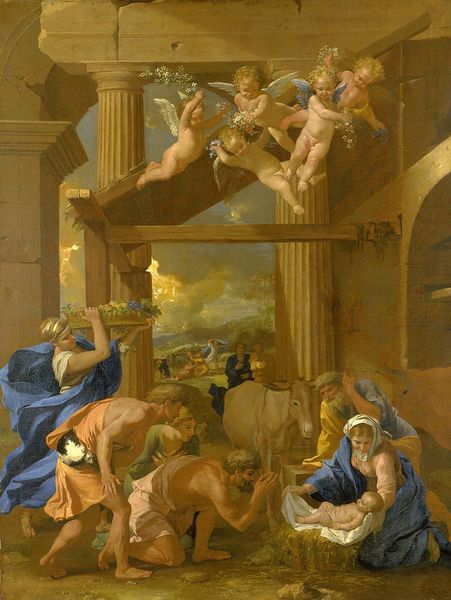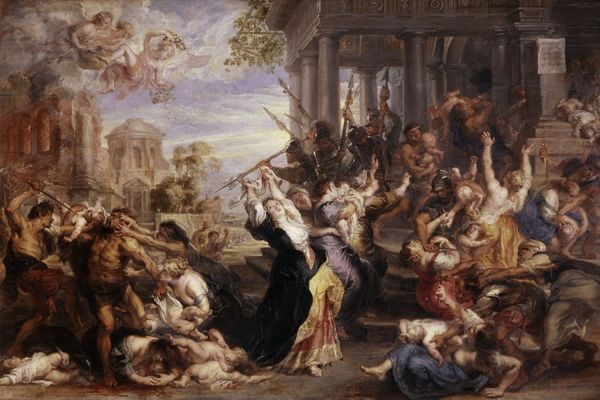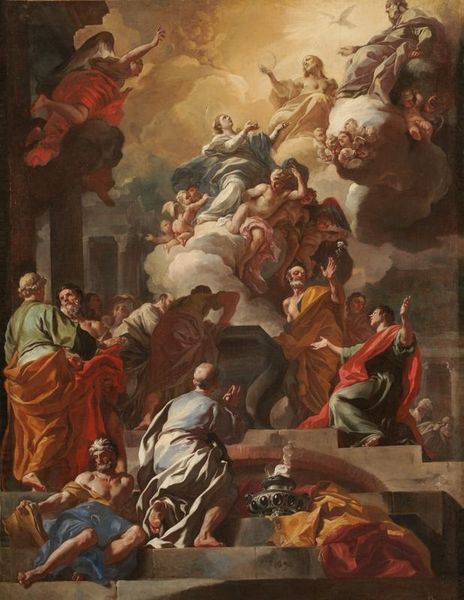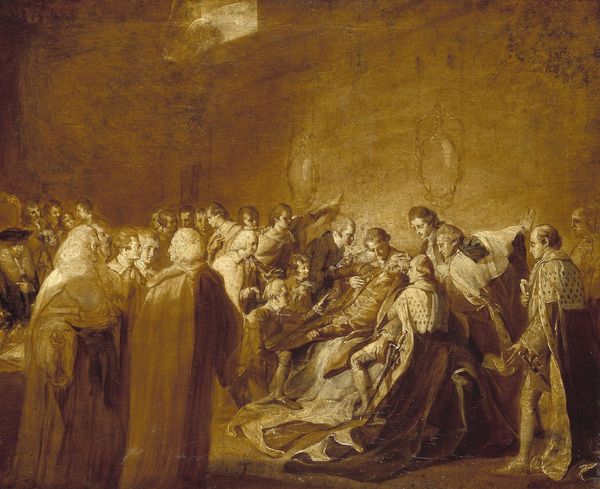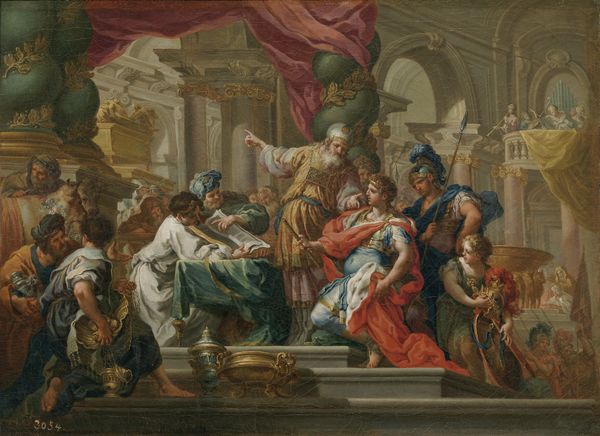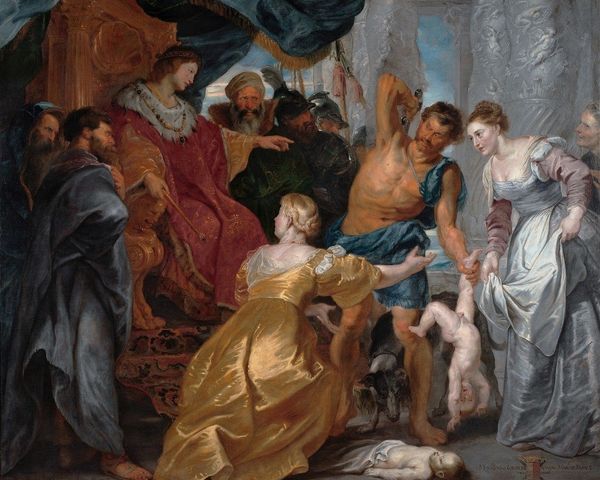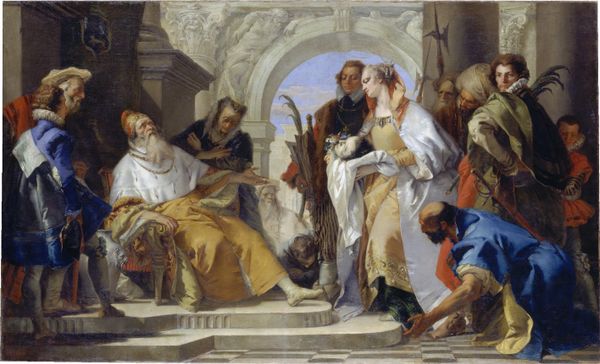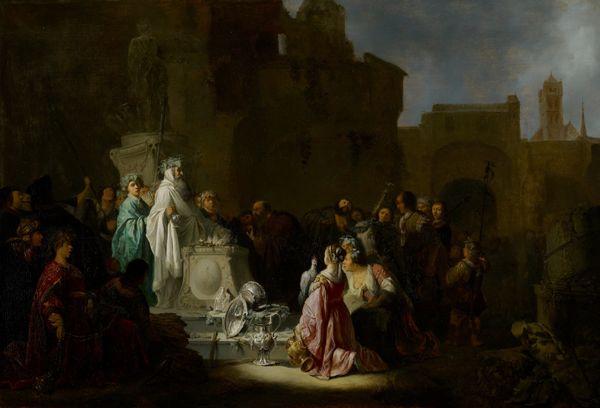
painting, oil-paint
#
gouache
#
narrative-art
#
baroque
#
painting
#
oil-paint
#
figuration
#
oil painting
#
history-painting
Copyright: Public Domain: Artvee
Editor: Giovanni Domenico Tiepolo's "Christ and the Woman Taken in Adultery," painted in 1752 using oil paint, captures a very dramatic scene. It seems to center on judgement and mercy, with a real sense of tension in the crowd. What do you make of this piece? Curator: Oh, it's a scene that whispers tales of humanity, doesn’t it? Look at how Tiepolo stages the drama, almost like a theatre piece. There's the enraged mob, the vulnerable woman, and Christ, bathed in a gentle light. Do you notice how the architecture both contains and amplifies the scene, almost as if to suggest how stories repeat in grand structures of power? Editor: That’s a great way of looking at it! I hadn't considered the architecture playing such a role. The way you describe it almost puts the scene outside a singular time and into something more universal. It is interesting to think that what is happening in the image continues to this day. Curator: Precisely! And notice Tiepolo's brushwork – loose and expressive, almost chaotic in the crowd scenes, reflecting their inner turmoil, then softened when representing the Divine. What feelings does that spark within you? How does the artistic language play into the larger, narrative one, eh? Editor: It does add another layer of understanding. The turbulent brushstrokes really emphasize the chaos of the moment, while the softness around Christ creates a sense of calm amidst the storm. Thinking about that is quite useful. I am realizing that the way a painting is created can completely affect my perspective on the piece. Curator: It's about peeling back layers, dear one, and finding ourselves reflected within the stories, or rather, reflecting on how the old ones remain! Editor: I think I'll carry this 'theatrical stage' idea when I see other figurative works. That really clicks!
Comments
No comments
Be the first to comment and join the conversation on the ultimate creative platform.


